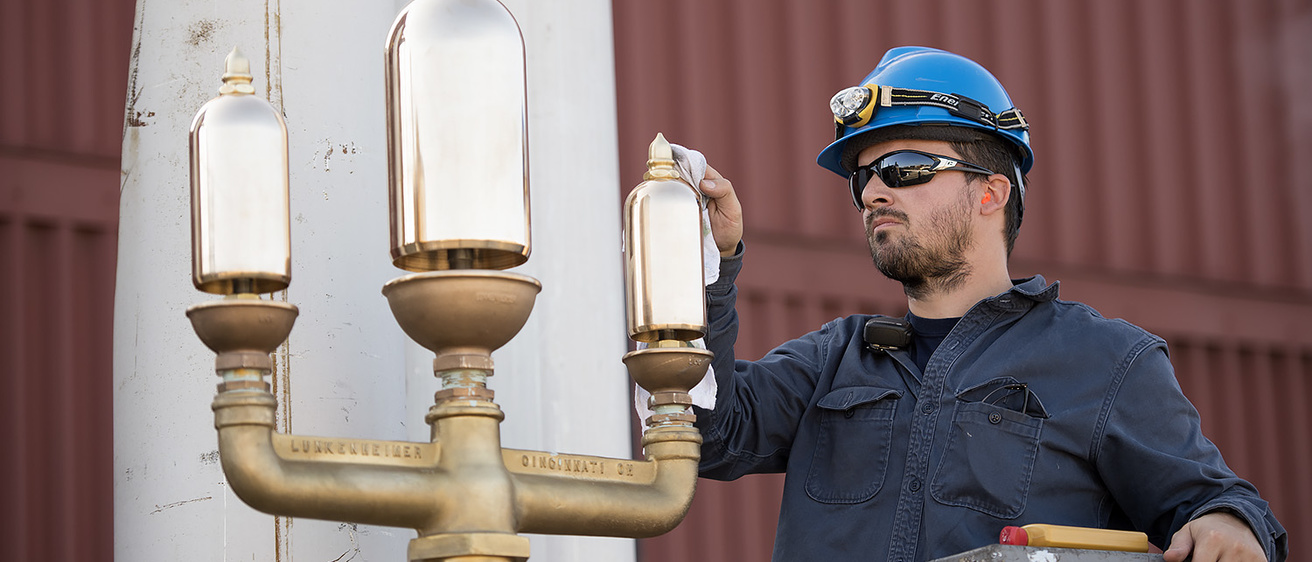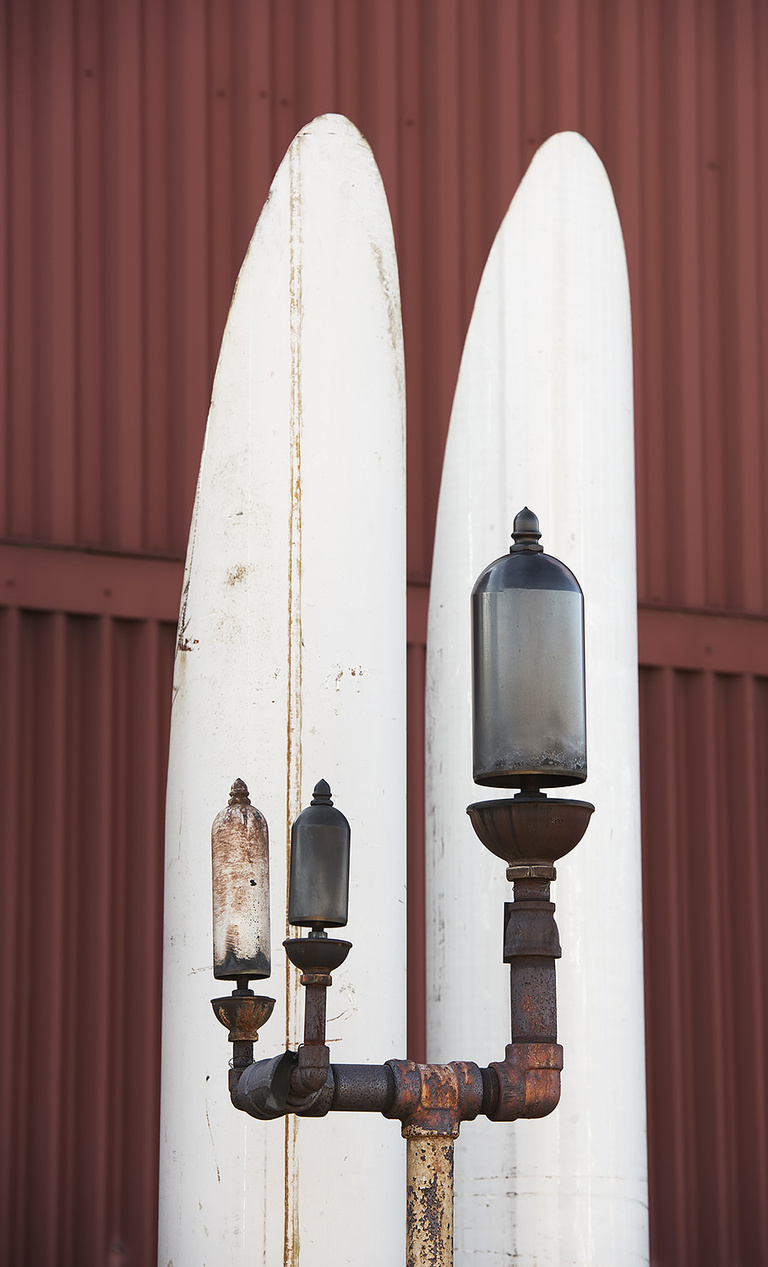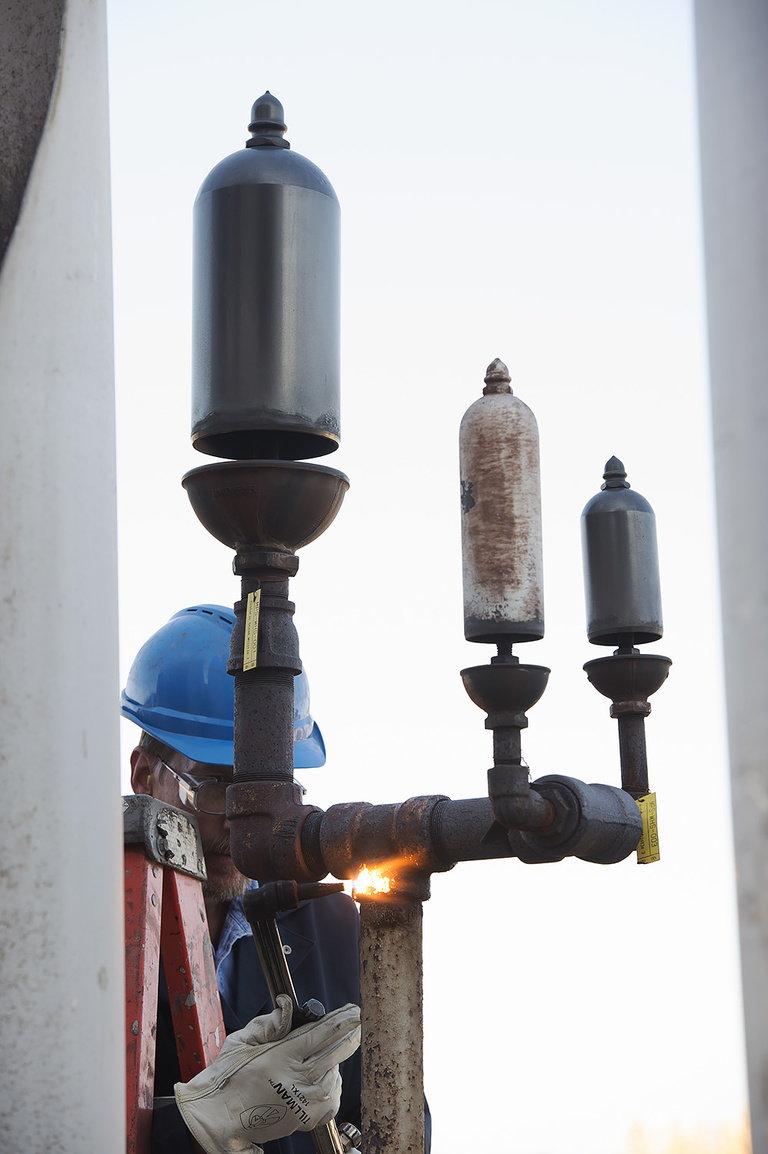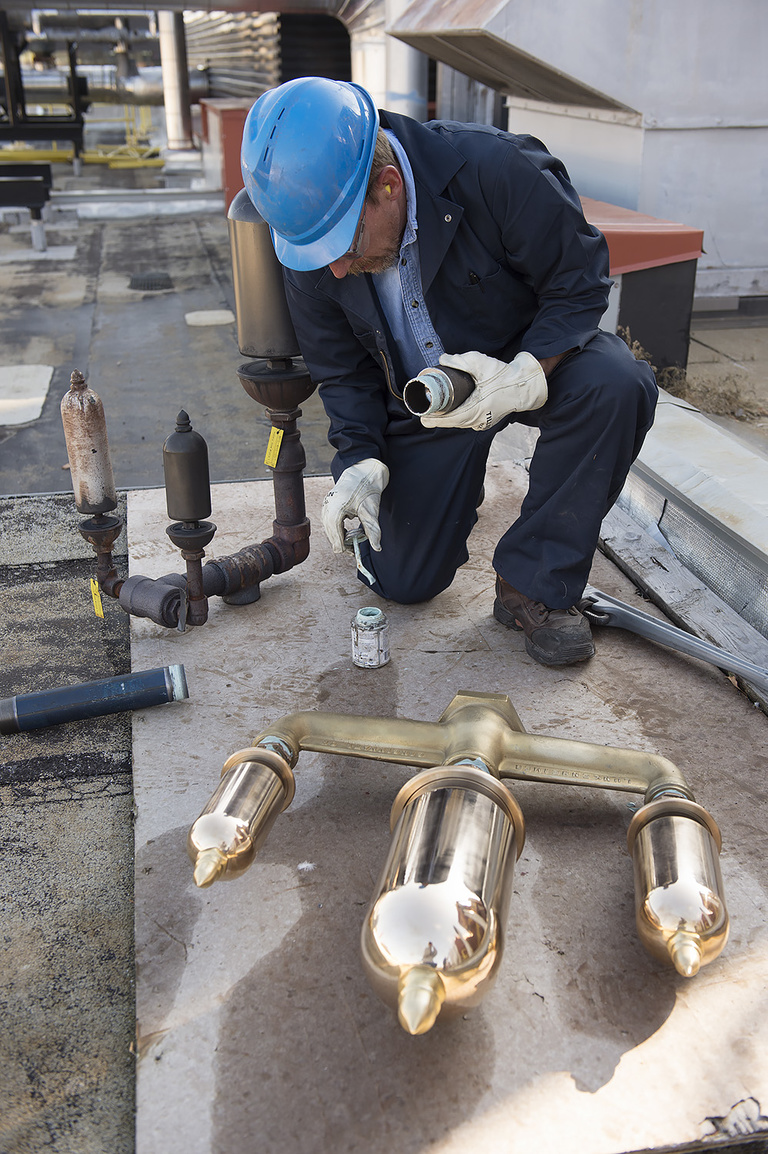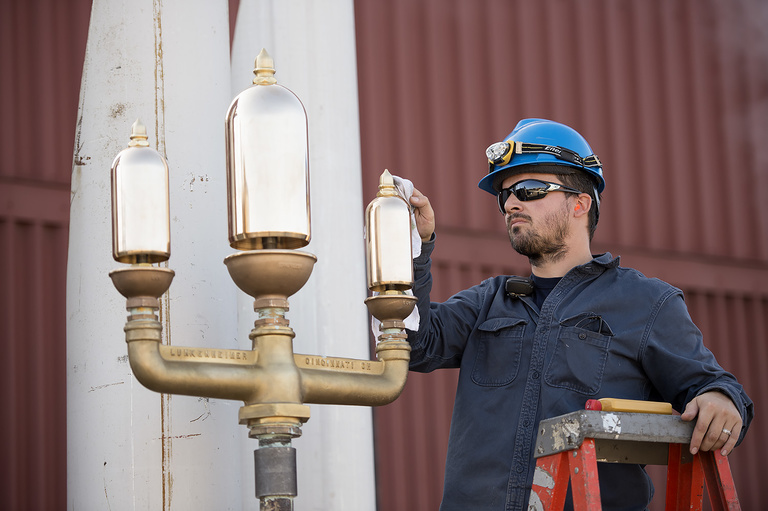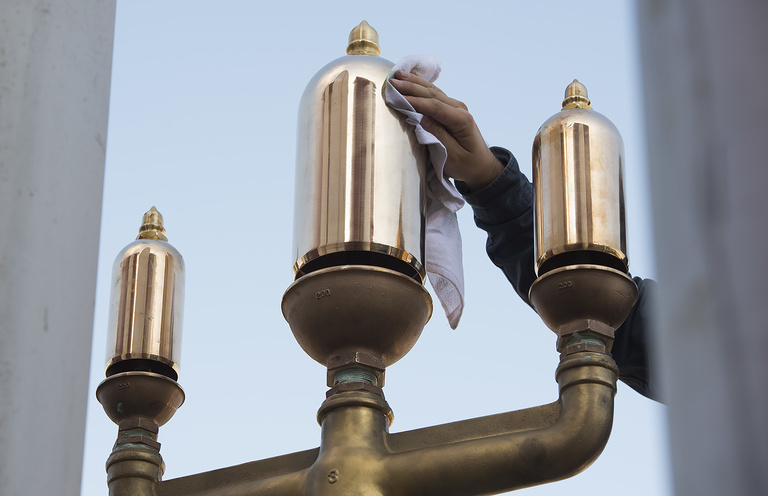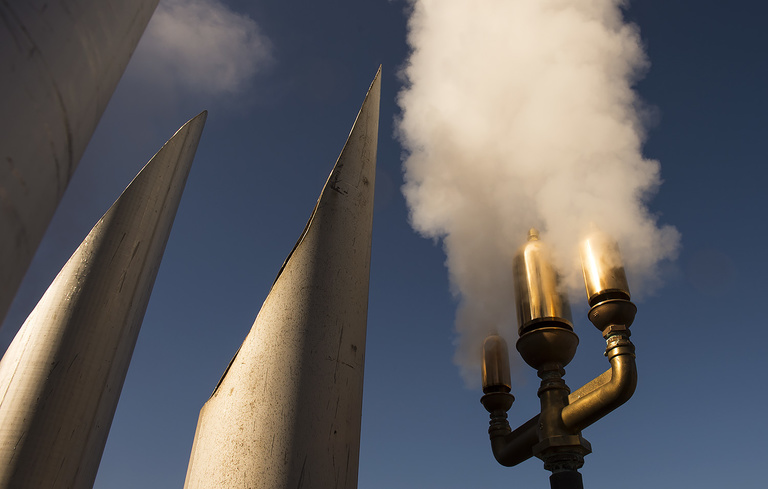Iowa Citians heard a new sound Nov. 3: A new whistle atop the University of Iowa Power Plant made its debut blow at noon that day after replacing one that had been in place for 20-some years.
Kyle Smith, electronics instrumentation supervisor in the power plant and whistle historian, says the new whistle is a Lunkenheimer Atlantic Line Three-Whistle Chime manufactured by the Cincinnati Valve Co. and is the fourth to sound from the power plant in its history. He says the first was installed in 1939, a gift from 1901 alumnus Fred Sargent, president of North Western Railways. The steam whistle was a gift to the university upon Sargent's retirement from the railroad that year.
The new whistle will continue to sound at 8 a.m., noon, 1 p.m., and 5 p.m.
For more about the whistle’s history, read "The enduring exhalations of The Whistle" from our fyi archives.
Smith says that first whistle was a locomotive version and originally would have been sounded by pulling a chain connected to a valve at the whistle's base. An automatic valve and push button were installed in 1947, the mechanism that is still used to activate the whistle today.
The power plant’s first whistle was used to sound off not only during important times of the day, but also during inclement weather and—during World War II—possible air raids.
That whistle lasted until sometime in the late 1970s, though Smith isn’t exactly sure when it was replaced because much of the documentation has been lost. The second lasted until sometime between 1992 and 1994, when it was replaced by the whistle that last blew at 8 a.m. Nov. 3.
Smith says the university’s first whistle was actually installed atop what is now the hydraulics lab in 1929 and used mostly as a way to celebrate touchdowns when the Hawkeye football team played in the old Iowa Stadium that was located right across the Iowa River.
Power plant crew members spent the morning of Nov. 3 installing and shining the new whistle in time for its debut sounding at noon. They continued to calibrate and tune it in the days that followed.
